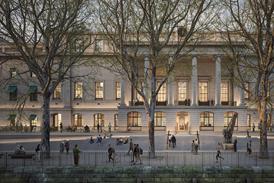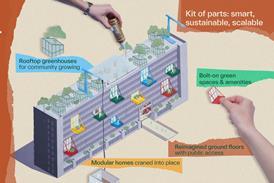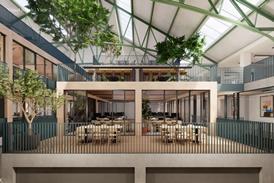Turning subsoil from Crossrail excavations into a new nature reserve is a win win situation says Gillian Darley

Sometimes a resounding set of numbers conjures up a picture better than an image. So I give you I,500 acres, 4.5 million tonnes and 1,528 shipments. This is the tally of the slow and steady transit of London subsoil, displaced during excavations for Crossrail, and taken, largely by water, to the coast of Essex in order to re-form and mould the marshland habitat. There, from 2015, Wallasea Island Wild Coast began to emerge, Europe’s largest manmade coastal reserve driven by a number of environmental agencies and the Royal Society for the Protection of Birds. The final process began by breaching the sea walls and establishing new lagoons within the resulting mud flats and saltmarsh. Wallasea, always less hermetic than Foulness (still attached to the MOD and the subject of my column a while ago) is a restored landscape, gradually opening to visitors with a network of paths and hides for the ornithologically inclined.
All of this might have been lost to London’s proposed third airport in the 1970s as this would have meant extending Foulness on reclaimed land to Maplin Sands. Now, being carefully managed back into wilderness, this part of the eastern profile of the country is on the move but now growing rather than diminishing under tidal attack. The beneficiaries are migratory birds, potentially in the hundreds of thousands, but also those of us who bother to go and see what is going on. For Crossrail, this venture seems to be a winner on at least two fronts. The new tunnels, to be in service within the system hardly more than a year from now, will transform cross-city transport while, out on the North Sea, quietly stabilizing, attracting vegetation and re-establishing an ecosystem, Wallasea Island grows before our eyes.

There is, for me at least, something obscurely satisfying about all this. The idea of reuse, recycling or repurposing (use the terms as you want), is a kind of soft ergonomic triumph. Anything that serves more than a single function, the folding steps that neatly become a stool, in fact a whole genre of furniture known as metamorphic and which is, itself, a cousin of campaign furniture, is a way of fitting our needs to our immediate world. What the Victorian military designed due to their officers’ need for home comforts on the battlefield, the 20th century leisure industry perfected in the form of the caravan and, better still, the 21st century camper van. The neat vehicle that, at the flick of a switch, suddenly sprouts an entire sleeping space in its superstructure, that can accommodate all a family’s needs within a vehicle little bigger than a standard white van, is nothing short of miraculous. A dual function, bringing an alternative reality to bear on a household item, a vehicle, a building or, let’s extend it, an entire location is peculiarly of the moment.
I am off to the Erith Lighthouse shortly: a lighthouse, on the River Thames? The London borough of Bexley, funded by the Mayor’s London Regeneration Fund, has committed itself to putting a bit of fizz back into a down at heel stretch of river frontage just upriver from the Dartford Crossing, on the borders of Kent and London. Architect DK_CM have neatly chosen the image of a lighthouse, more strictly coastal than estuarine, to illuminate the enterprise. Deftly, their new structure of theatrical rigging and coloured polycarbonate panels, will signpost the river frontage. And as to what comes next, that will be, of course, a test of adaptability in the best traditions of metamorphosis.
















No comments yet